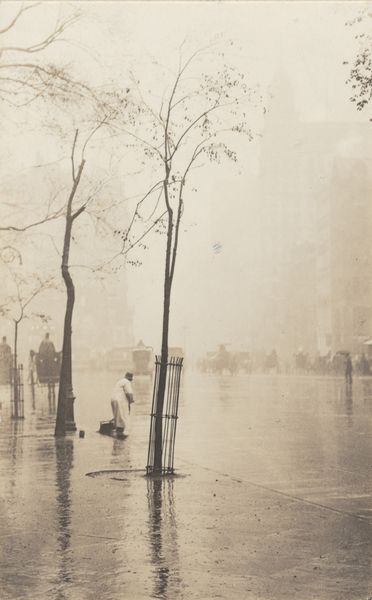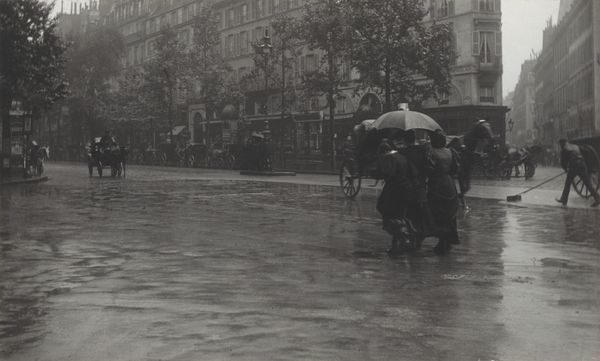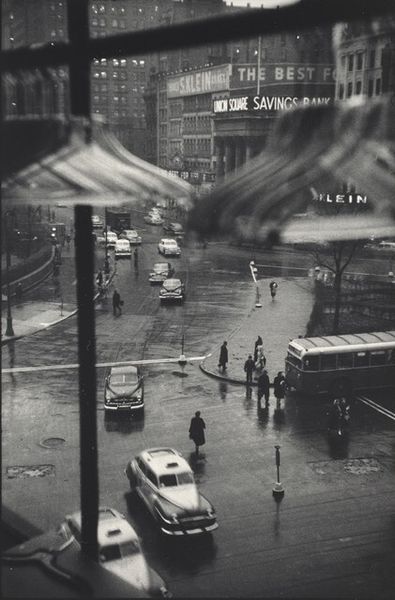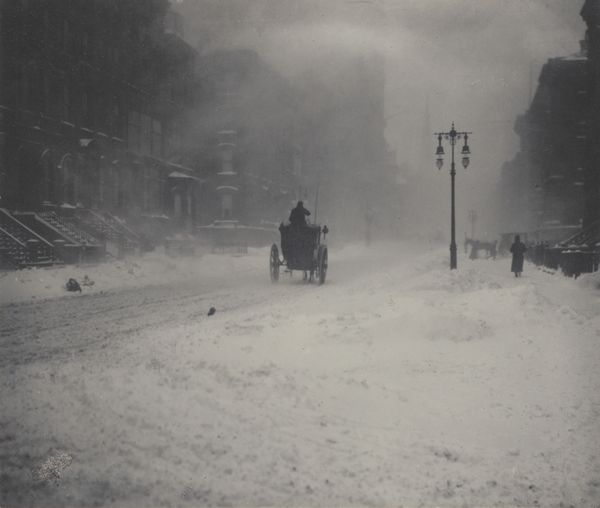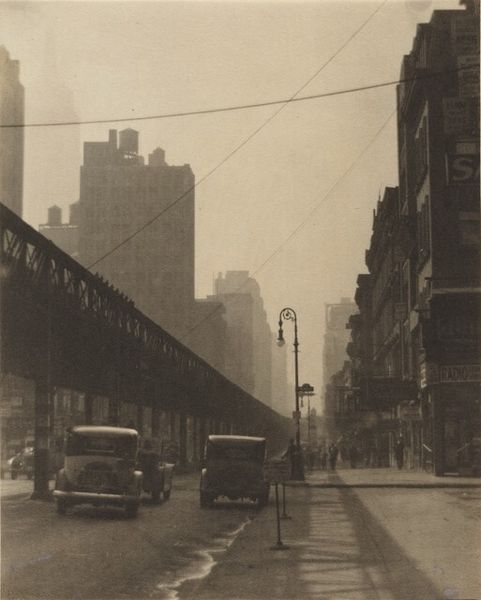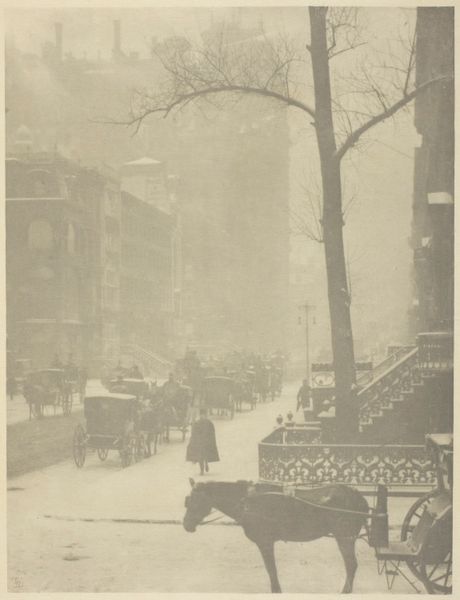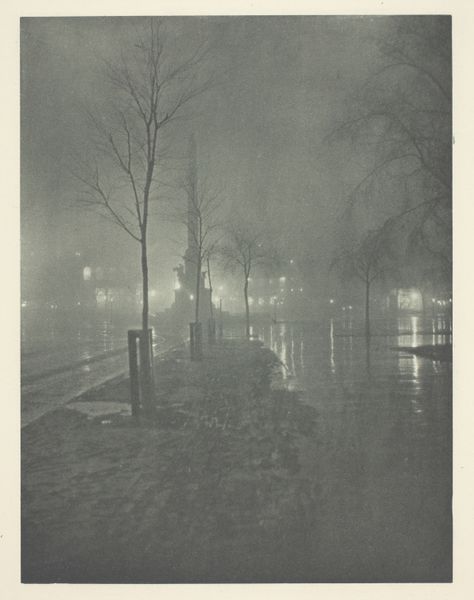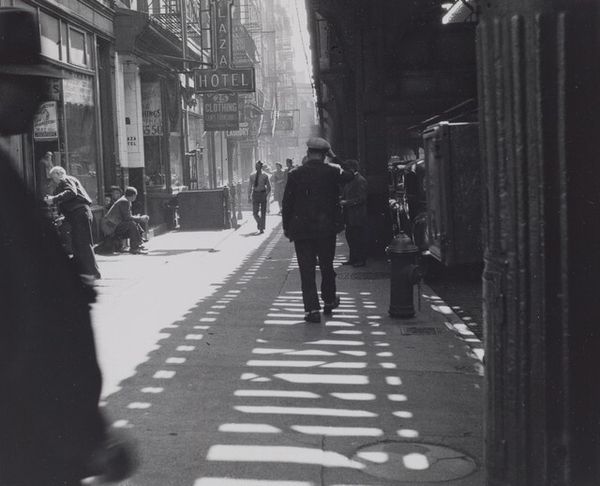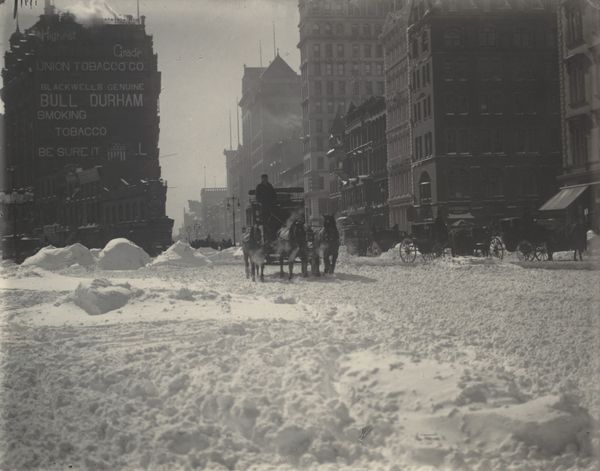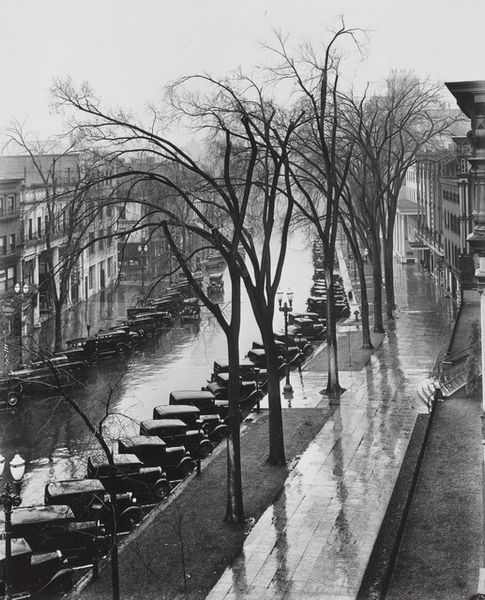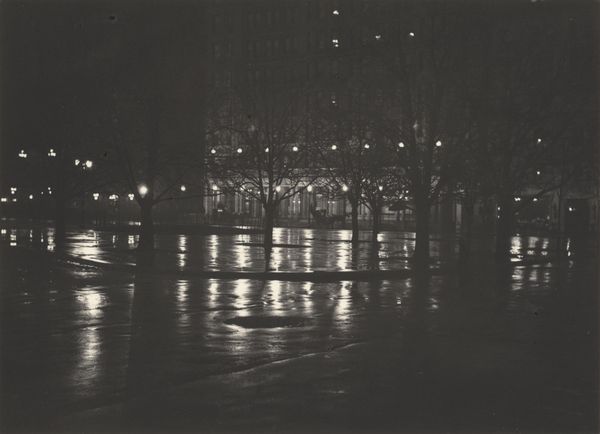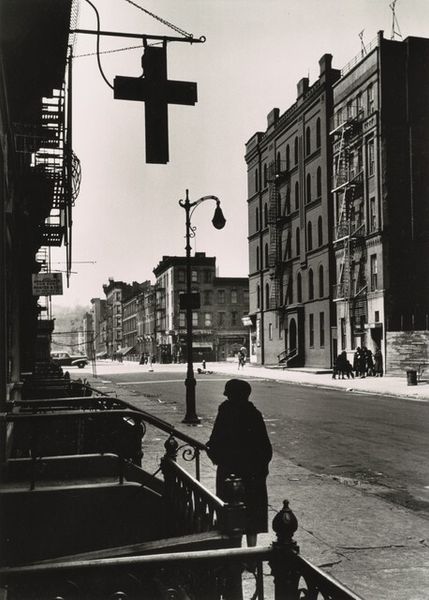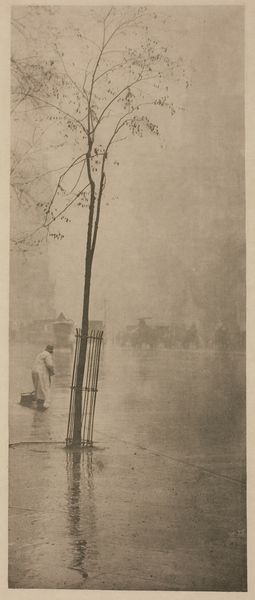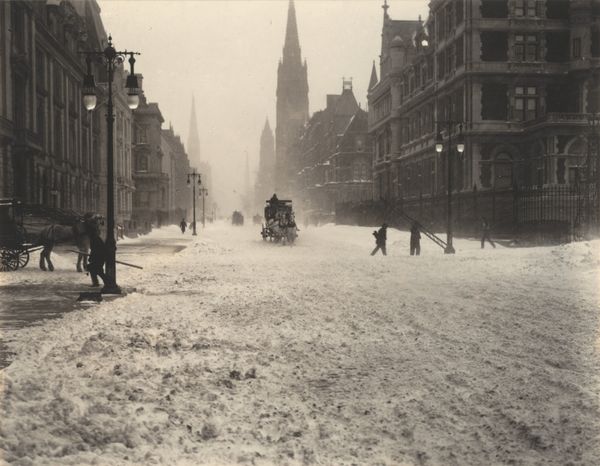
Dimensions: sheet (trimmed to image): 9.7 x 3.9 cm (3 13/16 x 1 9/16 in.) mount: 34.3 x 27.5 cm (13 1/2 x 10 13/16 in.)
Copyright: National Gallery of Art: CC0 1.0
Editor: So, here we have Alfred Stieglitz's gelatin silver print, "Street Sweeper and Little Tree," likely from somewhere between 1900 and 1932. The overwhelming mistiness and the everyday subject matter give it a really somber mood. What do you see in this piece? Curator: This image offers a fascinating lens through which to view the social fabric of early 20th-century urban life. Stieglitz was deeply engaged with capturing the changing face of American cities, and his association with the Photo-Secession movement saw photography elevated to fine art, but what makes this photo important culturally, is how it democratises imagery; it does this by putting the every day – the lives of workers and their labour – in conversation with beauty, in this case nature struggling for life. Editor: It's interesting you mention the democratization of imagery, because I notice the tree and the worker seem to be dwarfed by the skyscrapers in the background. Curator: Precisely. Consider how the Ashcan School, a parallel movement in painting, similarly focused on the grit and reality of urban existence. Here, Stieglitz isn't just documenting; he's positioning this narrative within the broader visual culture. How do institutions validate, or, as in this instance perhaps give dignity to the unseen workforce? Editor: So, it is the act of picturing someone who cleans the street that offers validation. Curator: Yes. Also, it poses questions about who decides what's worthy of artistic representation, what and whom should be elevated in our collective visual consciousness? This work acts as both a product of and a commentary on the artistic landscape of its time. Editor: I never thought about the act of documenting as an endorsement. Thank you for sharing. Curator: My pleasure. This experience reinforces the power of photography to capture the human experience within social and historical narratives.
Comments
No comments
Be the first to comment and join the conversation on the ultimate creative platform.
